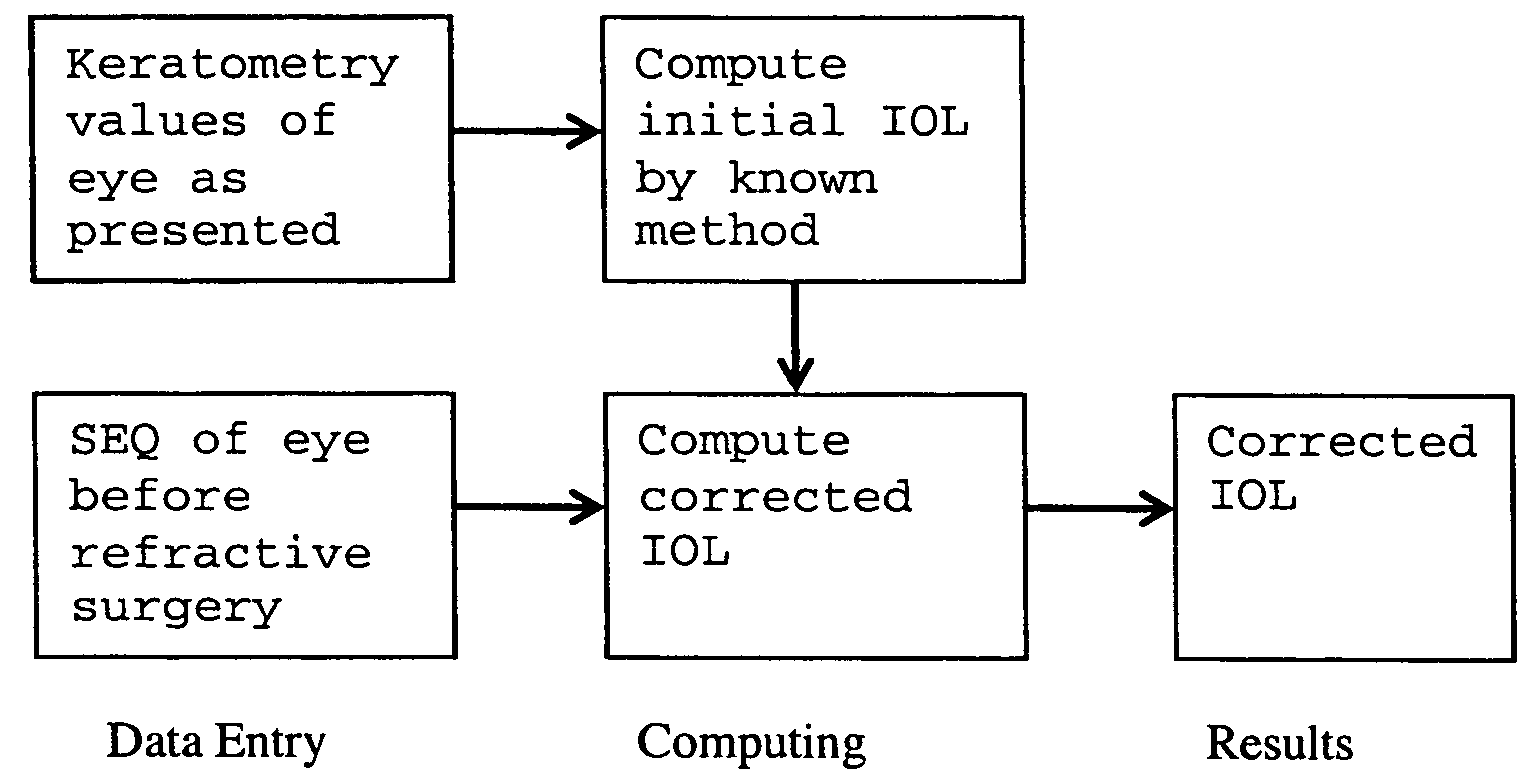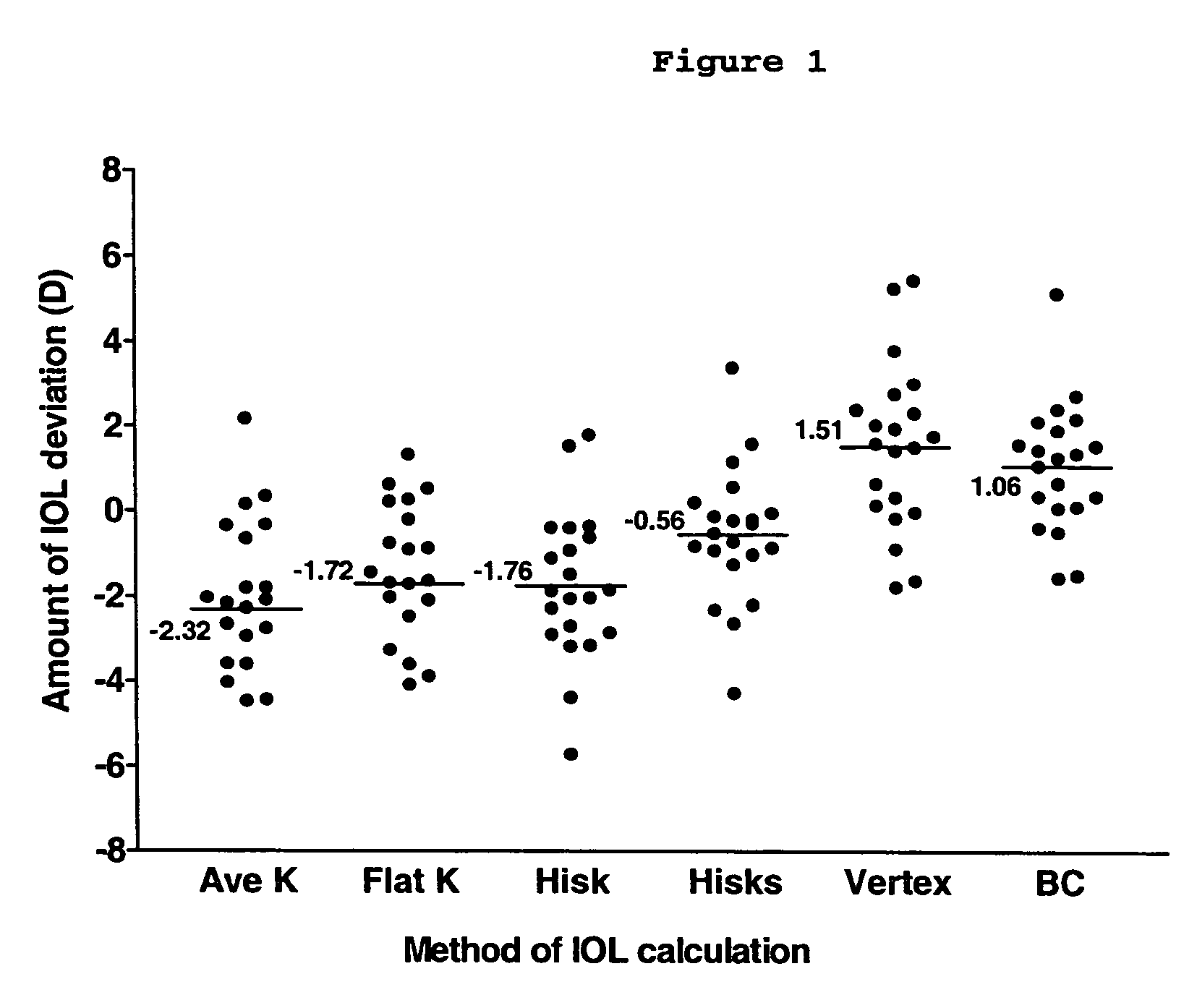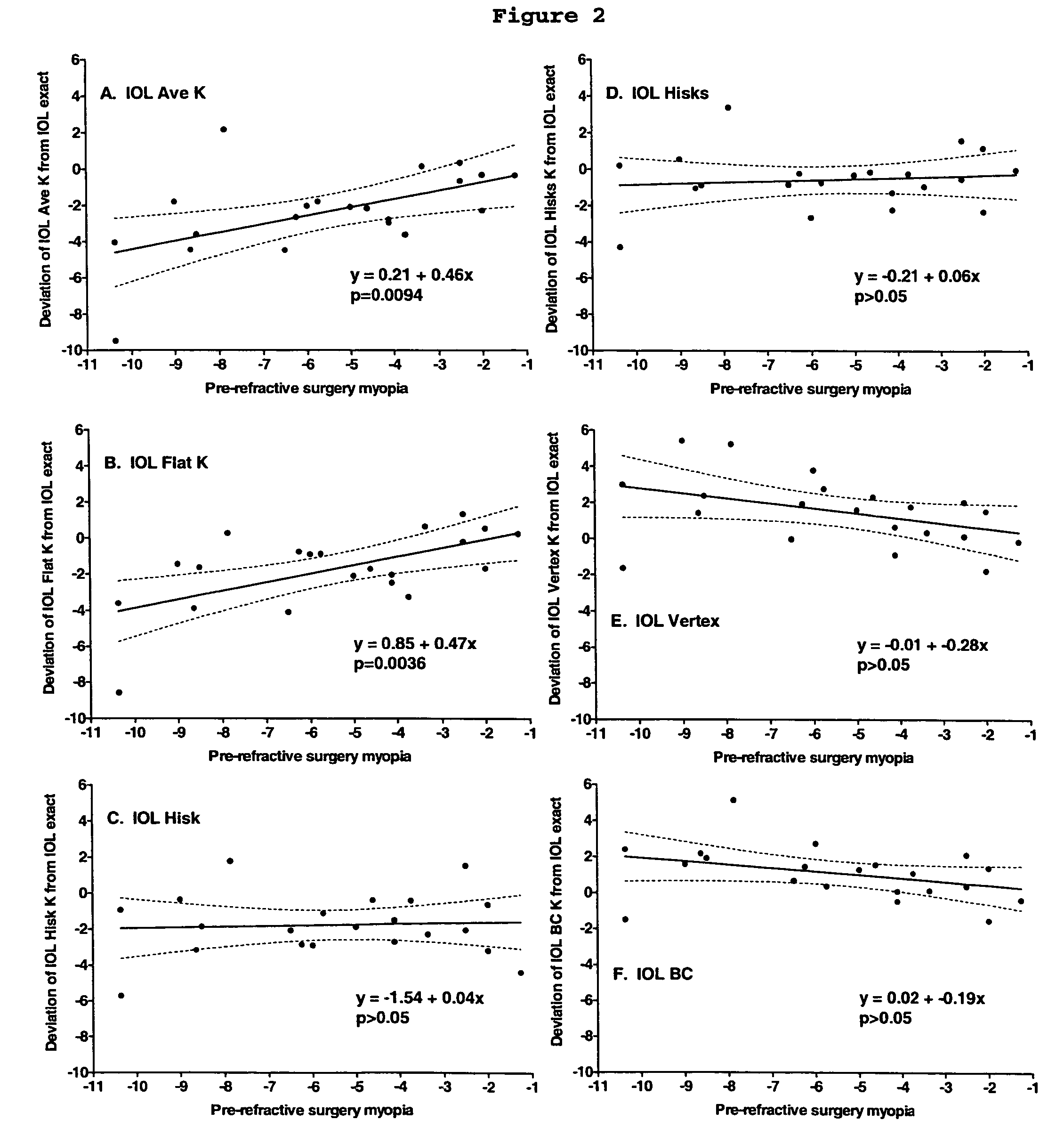Method, device and computer program for selecting an intraocular lens for an aphakic eye that has previously been subjected to refractive surgery
a technology for aphakic eyes and intraocular lenses, which is applied in the field of selecting intraocular lenses for aphakic eyes that have previously been subjected to refractive surgery, can solve the problems of inability to meet the rising expectations of patients, inability to accurately calculate intraocular lens power in eyes with previous refractive surgery, and inability to meet patients' rising expectations
- Summary
- Abstract
- Description
- Claims
- Application Information
AI Technical Summary
Problems solved by technology
Method used
Image
Examples
example 1
Patients and Experimental Methods
[0048]The results of 31 eyes that underwent phacoemulsification with IOL implantation following Laser Assisted In-Situ Keratomileusis (LASIK) were studied retrospectively. All 31 eyes had LASIK, 21 of which were myopic treatments and 10 of which were hyperopic treatments.
[0049]The LASIK procedure was performed as previously described.1 A flap was created by the Moria (Doylestown, Pa.) microkeratome or Automated Corneal Shaper (Rochester, N.Y.) microkeratome. Excimer laser ablation was performed by either the VISX (Santa Clara, Calif.) or Alcon Ladarvision (Fort Worth, Tex.) laser. The procedures were uncomplicated and no sutures were used.
[0050]Phacoemulsification cataract surgery procedure was done in all cases. A temporal corneal incision was made and a circular capsulorhexis was created. Phacoemulsification was completed after hydrodissection. Implantation of an IOL within the bag was then completed. Each procedure was uncomplicated.
[0051]IOL powe...
case example
[0065]A 40 year old male presented with a visually significant nuclear cataract in the left eye. Two years prior the patient had successful LASIK to correct myopia. The following are pre- and post-LASIK data:[0066]Pre-LASIK spherical equivalent: −7.87[0067]Post-LASIK spherical equivalent, before developing cataract: −0.75[0068]Pre-LASIK average keratometry: 43.33[0069]Post-LASIK average keratometry: 39.00[0070]Post-LASIK flattest keratometry reading: 38.37[0071]Axial length: 26.83[0072]IOL type: SA60AT, A-constant 118.4
Method I
[0073]First a corneal power is determined:[0074]Conversion of spherical equivalent (SEQ) from spherical to corneal plane[0075]Pre-LASIK SEQ on spectacle plane (SEQs)=−7.87[0076]Pre-LASIK SEQ on corneal plane=1000 / ((1000 / SEQ)−14 (Vertex dist))
[0077]SEQc=1000 / ((1000 / -7.87)-14)=-7.09[0078]Post-LASIK SEQ on spectacle plane (SEQs)=−0.75[0079]Post-LASIK SEQ on corneal plane=1000 / ((1000 / SEQ)−14)
SEQc=−0.74
Change in
[0080]SEQc=Pre-LASIKSEQc-PostLASIKSEQc=-7.09-(...
PUM
| Property | Measurement | Unit |
|---|---|---|
| vertex distance | aaaaa | aaaaa |
| distance | aaaaa | aaaaa |
| IOL power | aaaaa | aaaaa |
Abstract
Description
Claims
Application Information
 Login to View More
Login to View More - R&D
- Intellectual Property
- Life Sciences
- Materials
- Tech Scout
- Unparalleled Data Quality
- Higher Quality Content
- 60% Fewer Hallucinations
Browse by: Latest US Patents, China's latest patents, Technical Efficacy Thesaurus, Application Domain, Technology Topic, Popular Technical Reports.
© 2025 PatSnap. All rights reserved.Legal|Privacy policy|Modern Slavery Act Transparency Statement|Sitemap|About US| Contact US: help@patsnap.com



